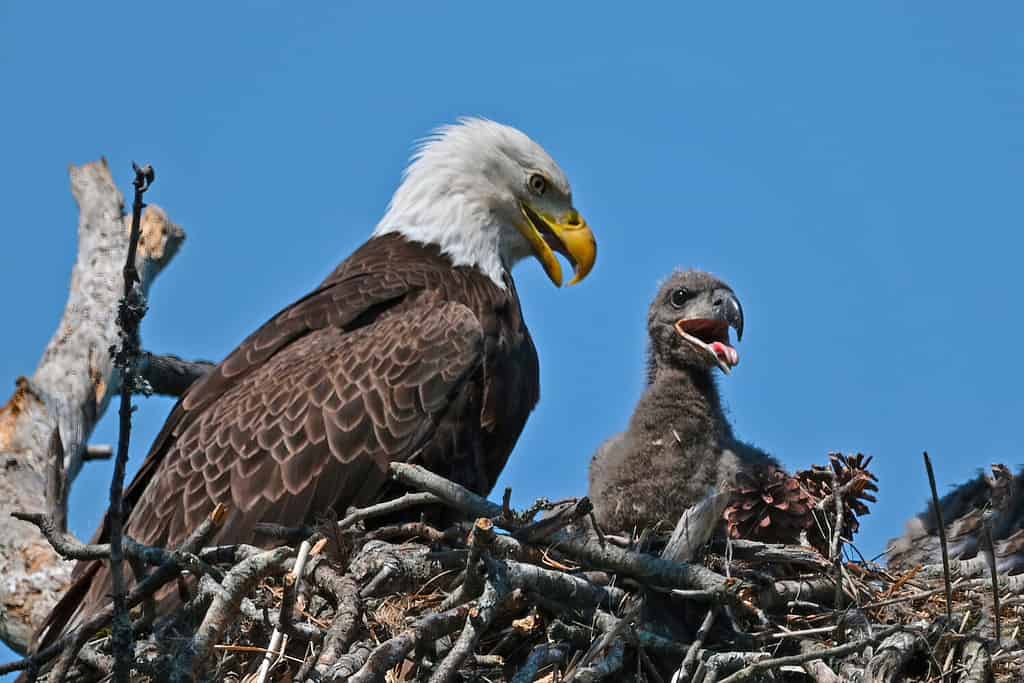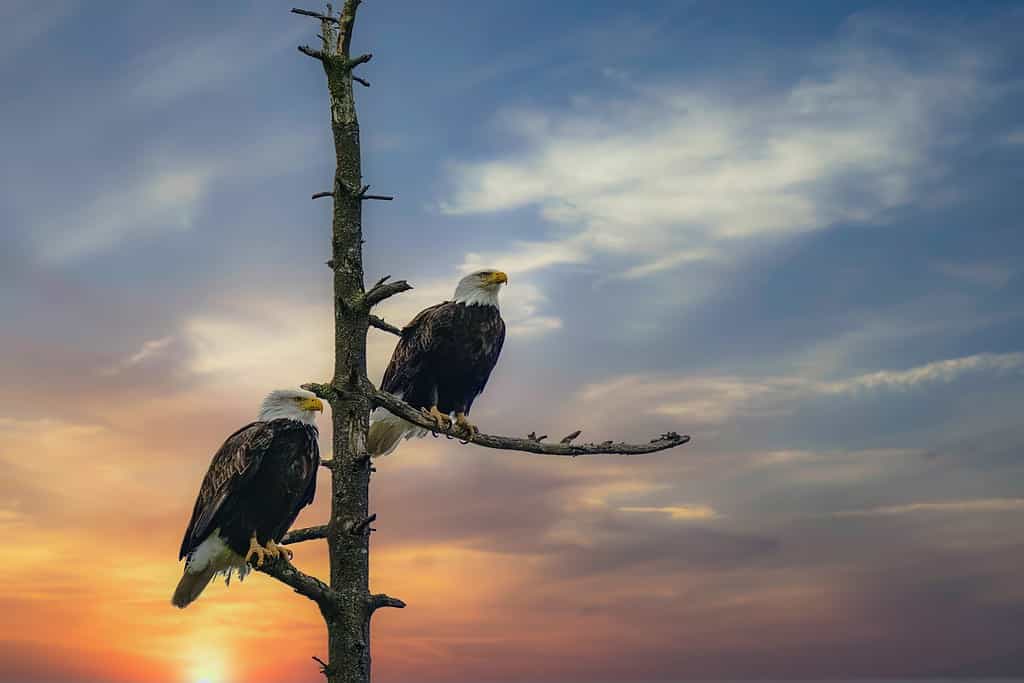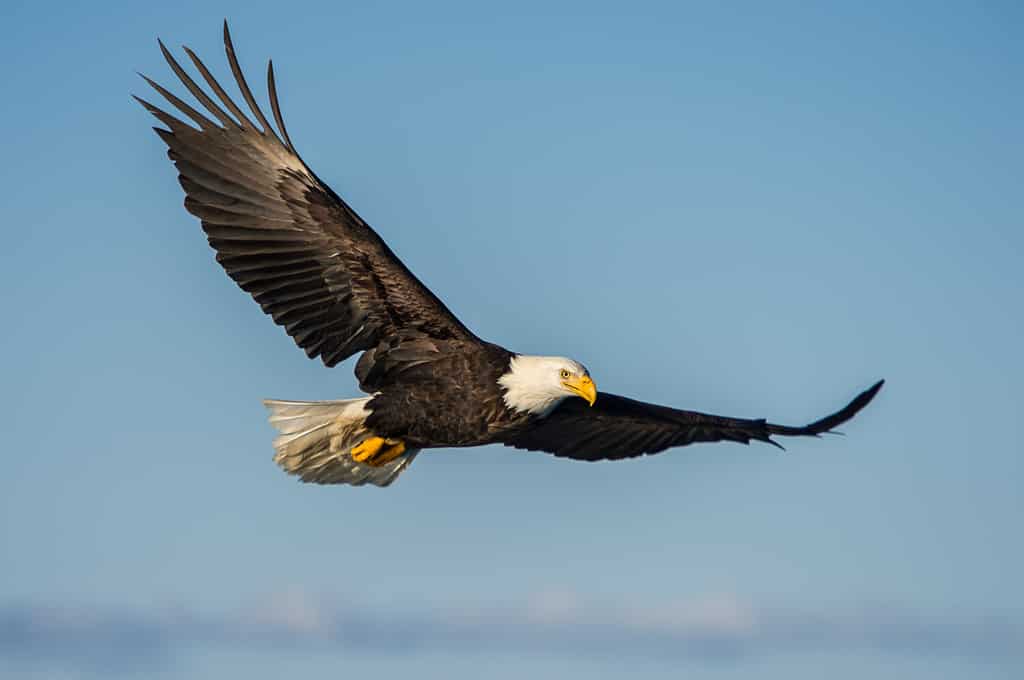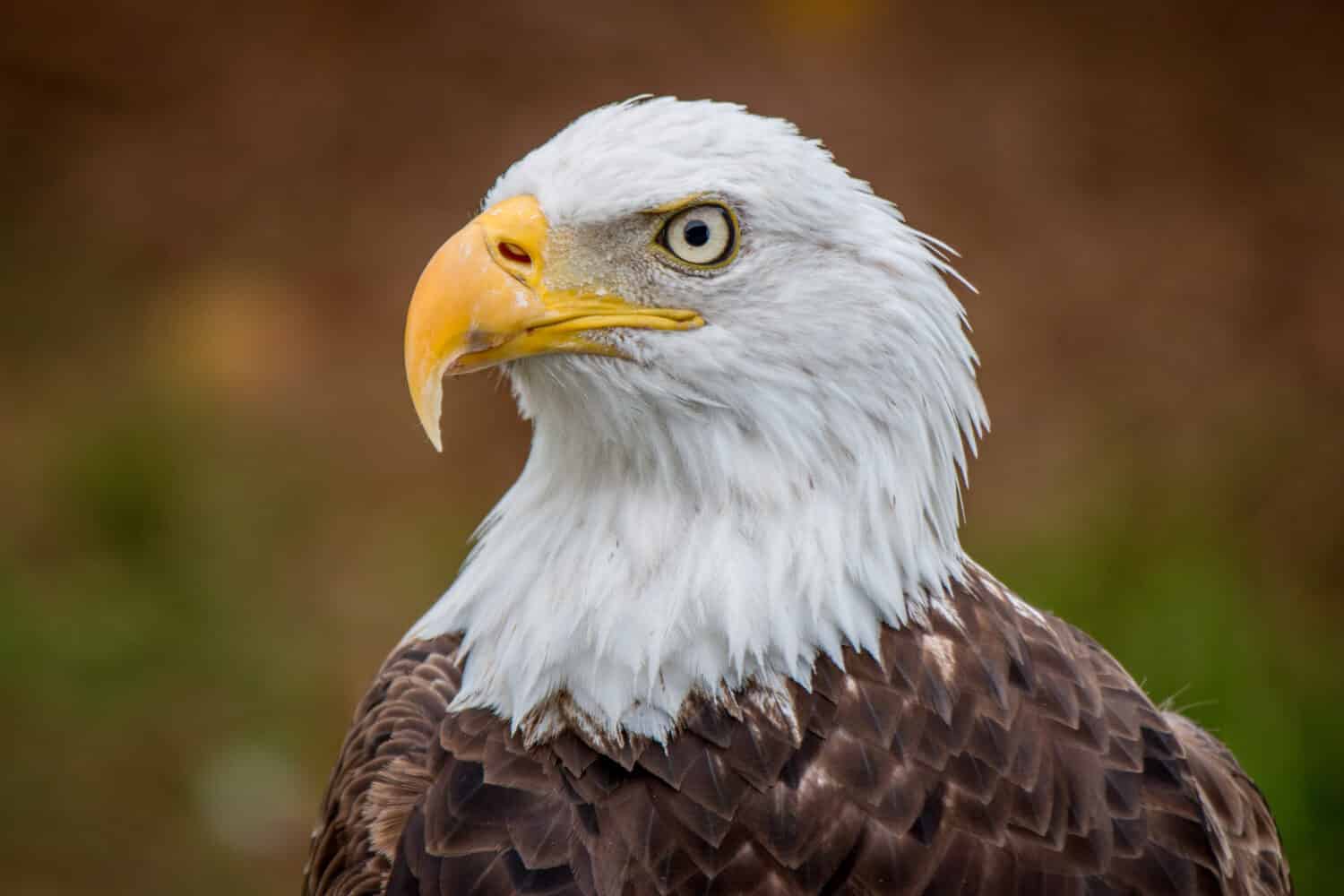When the founding fathers chose the bald eagle as the national symbol in 1782, there were as many as 100,000 nesting pairs of eagles in the United States. Found in every continental state, bald eagles were prevalent nationwide. Since then, however, the eagle has not thrived within the country — even though it is the national bird.
Bald eagles (Haliaeetus leucocephalus) were critically endangered for many years in the United States. Seen as dangerous predators, the birds were slaughtered extensively as they were believed to kill livestock. The bald eagle was so despised that Alaska enacted a bounty for the birds from 1917-1959 and paid hunters for each carcass they turned in. As industrialization rose and forests were clearcut for farmland, the resulting decreases in habitat and food also handicapped eagle populations nationwide.
The Eagle’s Brush with Extinction
By 1940, the bald eagle population was so threatened that Congress passed the Bald Eagle Protection Act, which prohibits anyone from killing, taking, capturing, or disturbing the birds or their feathers, eggs, and nests without a permit. Steep penalties were enacted for violations of the act, with current penalties ranging from a fine of $100,000 to a year in prison.
Despite the passage of the act, the birds did not rebound. In the mid-1940s, introducing Dichlorodiphenyltrichloroethane (DDT) devastated the eagle population. The insecticide affected eagle eggs, causing them to become incredibly thin and easily breakable, handicapping the population’s ability to stabilize. By 1963, there were only 417 nesting pairs of eagles in the lower 48 states. In 1967, the bald eagle was classified as endangered under the Endangered Species Preservation Act.
The Bald Eagle’s Recovery
The future brightened for bald eagles in 1972 when the Environmental Protection Agency (EPA) banned DDT in the United States. While DDT was out of the picture, lead poisoning was still a concern for eagles that would eat waterfowl or other animals containing lead shot. However, in 1987, the U.S. Fish and Wildlife Service enacted a nationwide ban on lead shot, with full compliance required by 1991. These changes began to help the population slowly rebound, and by 1996, the eagle’s conservation status was changed from endangered to threatened.
In 2007, bald eagle populations grew to an estimated 10,000 nesting pairs in the United States. These numbers were high enough that the bird was entirely removed from the federal threatened and endangered species list.
And the numbers have continued to climb. Thanks to the continued protection and conservation efforts, in 2020, the bald eagle population rose to 316,700 eagles, with 71,400 nesting pairs. While these numbers do not yet reach historic population values, it is a positive sign that the eagle population is heading in the right direction. As the number of these majestic birds grows, there are many exciting things to learn about them. Here are five facts about America’s bird.
1. Young Bald Eagles Aren’t “Bald”

Eagle eggs incubate for 35 days before hatching.
©Brian E Kushner/Shutterstock.com
Bald eagles aren’t bald but have white feathers on their heads that contrast with their dark bodies. However, hatchling and juvenile birds do not have white heads but are dark brown. The white head feathers develop around four to six years of age when the eagles mature.
2. Mom Chooses the Nesting Site

Both the male and female protect the territory around the nesting site.
©RLS Photo/Shutterstock.com
While the male and female eagle work together to build a nest, the female decides where the nest will be located. Once she has identified the perfect spot, they both go to work collecting large sticks, moss, grass, or sod to create the nest. When it comes to making a nest, eagles go big. Some eagle nests have a 10-foot radius and weigh up to 2,000 pounds. If the eagles like the nesting site, they may return to the same nest in subsequent years. Each year, they continue to add on and expand the original nest. Bald eagles mate for life, so the same pair will continue to breed and nest together.
3. Fish is a Favorite Food (But They Aren’t Picky)

Eagles will eat 5-10% of their body weight in food per day.
©iStock.com/Schaef1
Fish is the bald eagle’s favorite food. As such, the birds commonly live near lakes or other locations where fish are abundant. However, these birds are opportunistic and won’t turn down other meals. Eagles will also eat waterfowl, sea birds, small mammals, turtles, and even carrion such as roadkill.
4. They Live a Long Time

Bald eagles reach maturity at four to six years of age and will then mate for life.
©Wirestock/ via Getty Images
The average lifespan of a bald eagle is around 15 to 25 years in the wild. The oldest wild-banded eagle on record died in a car collision in 2015 at 38 years old. In captivity, the birds can live for 30-50 years.
5. They Can Fly Hundreds of Miles

The national bird lives in every state except for Hawaii.
©FloridaStock/Shutterstock.com
If ample food and other resources exist in their area, many bald eagles won’t migrate. However, some eagles will migrate south in the winter to find more plentiful food sources. Telemetry studies have found that migrating eagles can fly up to 225 miles in one day, though the average flight distance is around 100 miles per day. These birds typically fly around 20-40 miles per hour but can dive up to 100 miles per hour.
Summary of Facts About Bald Eagles
| Fact | Description |
|---|---|
| 1. Bald eagles aren’t hatched bald | Bald eagles prefer eating fish but will also eat birds, small mammals, turtles, and even carrion. |
| 1. Bald eagles aren’t hatched bald | While the male and female work together to build the nest, she chooses the location for the nest. |
| 2. Mom chooses the nest site | 5. They can fly hundreds of miles |
| 4. Bald eagles live a long time | 3. Fish is a favorite food |
| The average lifespan in the wild i 15-25 years, though one wild bird was recorded to be 38 years old when it died. | Bald eagles can fly up to 225 miles per day during migration. |
Thank you for reading! Have some feedback for us? Contact the AZ Animals editorial team.








